The virtue of decay
When built in 1863, the tenement at 97 Orchard Street in the Lower East Side of New York City was considered a hygienic building with outhouses connected to the sewer and a reservoir-fed pump just for residents. But by 1935 it made more sense for the owner to evict the residents and shutter the apartments rather than reverse the condemnation order issued by the city. The shopfronts generated enough income to keep the building solvent.
The residential areas were held in stasis for 53 years until Lower East Side Tenement Museum founders Ruth J. Abram and Anita Jacobson acquired the building to realize their vision of a museum dedicated to the immigrants who once lived there. Using city records, they identified former tenants among the almost 7,000 people who lived at this address and restored selected apartments, reflecting the time period of the people’s lives there. Thus, the Joseph and Bridget Moore apartment is set in 1869, the John and Caroline Schnieder family is set in two time periods, the 1870s and the 1930s, and the Gumpert family in the 1880s, and so on. The Museum opened with six different apartment tours. Since then, the Museum has acquired another building and now offers 10 apartments, a workshop, and three neighborhood walking tours.
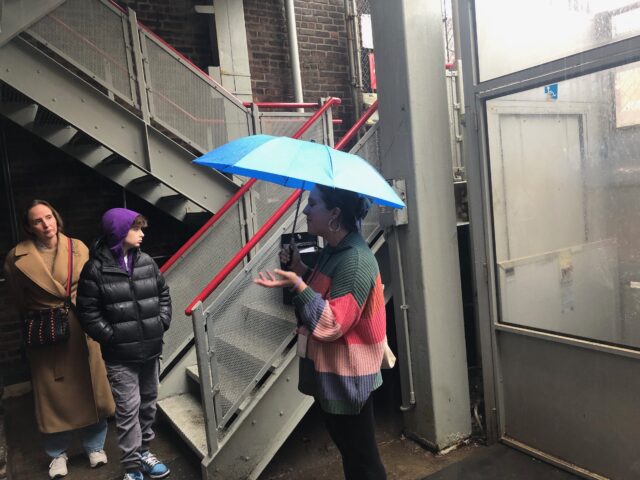
Our tour started outside at the building’s rear, where the sewer-connected outhouse and water source were located. A modern, colored, steel exterior stair took us to the 4th floor, where the Apartment Tour was located. Our orientation took place in an unrestored “front room,” with the orientation slides being projected on one of the interior windows installed to comply with the Tenement House Act of 1901, which required natural light to penetrate the interior rooms.
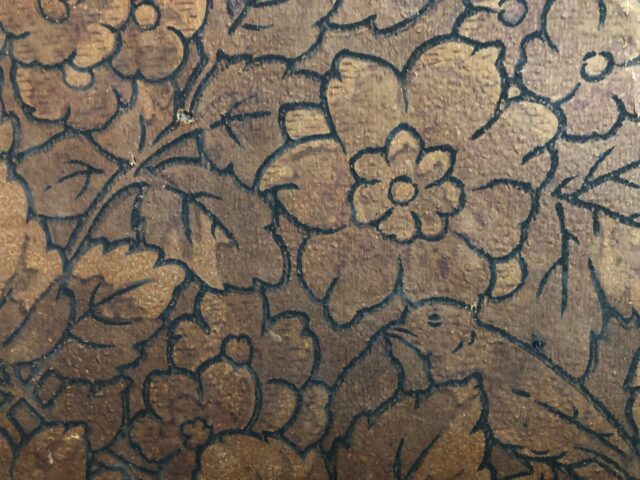
The walls and ceilings in our orientation space were just as Ms. Abrams and Ms. Jacobson found them. The paint cracked and shedded on wood surfaces, the wallpaper dark with dirt and fallen way in spots. Silver and clear washers held the plaster in place. A modern air circulation unit was located nearby. The appearance of modern components that stabilized the decay was discrete and unapologetic; no effort was made to blend them into the space.
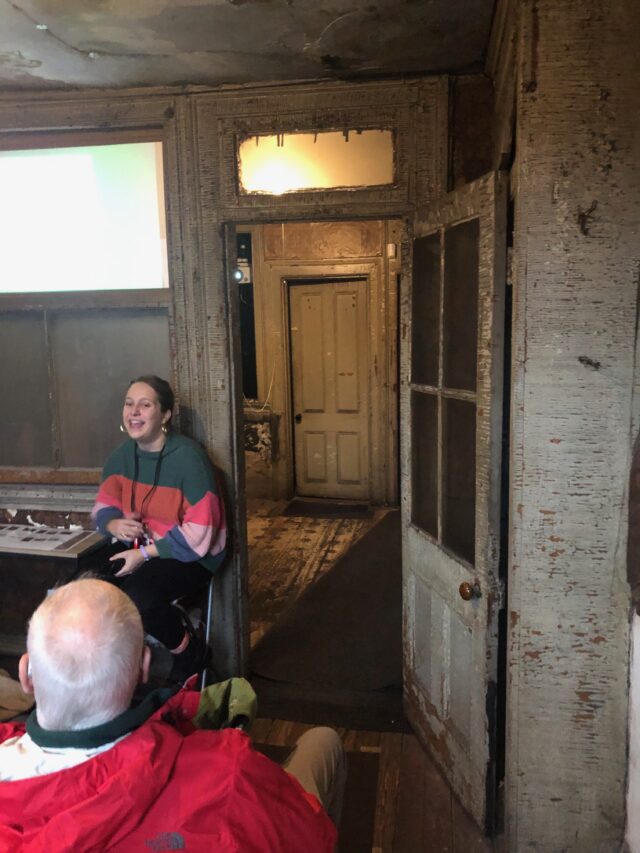
None of the visitors appeared to mind the cramped and scruffy quarters; we were glad to be in from the cold and rain!
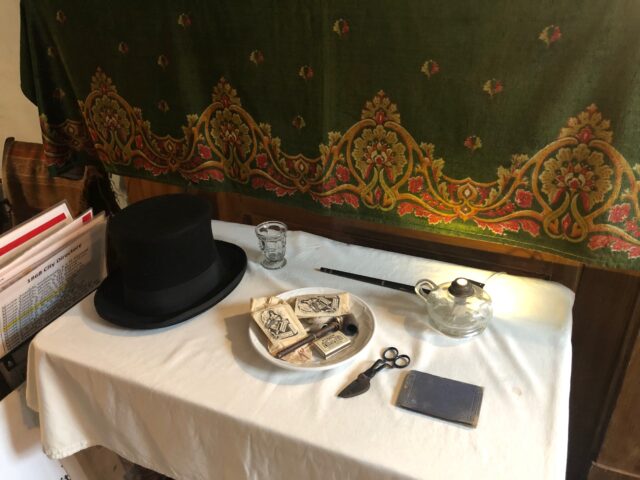
Once we entered the Joseph and Bridget Moore apartment, the ambiance changed from decay to the austere, homey atmosphere of an 1869 apartment: a translucent blue on the bare plaster walls, a green shawl on the fireplace, and a striped rug on the floor. Using simple image laminated handouts, the interpreter established context while she told the story of the Moore family. She engaged the audience with questions and responded easily to queries. Indeed, if the baby Agnes needed attention and daughter Mary Catherine (5) and her younger sister Jane were having a tiff, the ambiance might not be so cozy.
During the research and development of this exhibit, the Museum located descendants of the Moores featured in this apartment. One handout showed the small front room we were standing in, filled with people— Joseph and Bridget’s descendants.
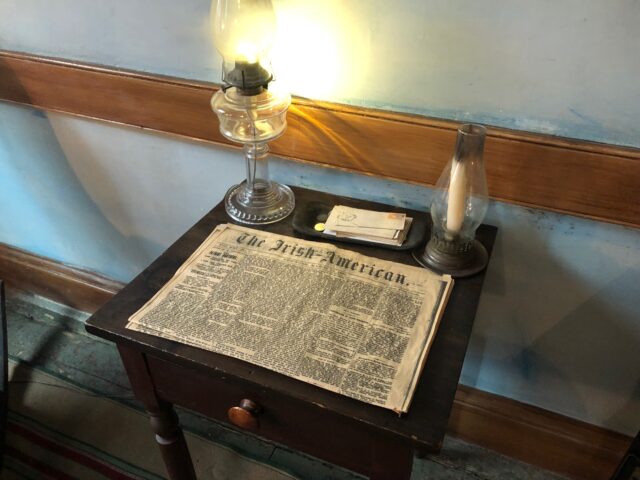
My favorite object used to bring the apartment to life was the Bridget’s Cross (similar to the one illustrated at the top of this post) located in the transom above the door. I have one of my own that my mother brought over from one of her trips to Ireland. Interestingly, there was no St. Bridgets Cross in my grandparents’ house also immigrants from the late 1920s, a very distant time and place.
However, I cannot help but feel the world we live in today is not so different from the context depicted in this museum. Forces of gentrification, displacement, and the economic systems that decide housing for so many people are still tied to real estate and the value it brings land owners. New York City landlords are once again in the process of making it less livable for working-class people. The Lower East Side, once a home for immigrants and laborers, is now the haven for some of the richest people on earth with exorbitant rent prices and new developments.
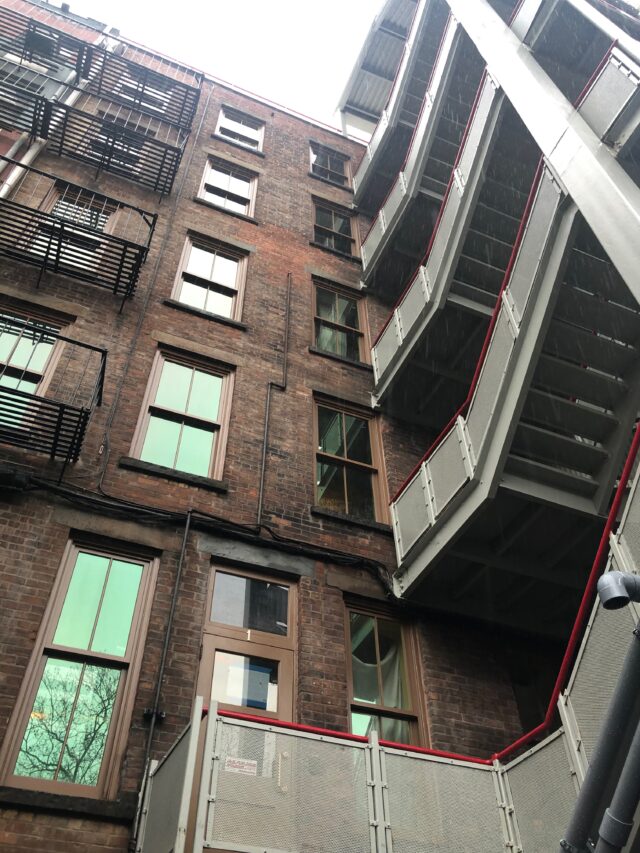
Back through the decay and down eight flights of sturdy steel stairs to Allen Street and the well-stocked gift shop for holiday shopping, I was back in the 21st century. The Museum has thrived since my last visit in 2005 as a valuable testament to the city’s identity; I will most certainly be returning for another tour, or two!


